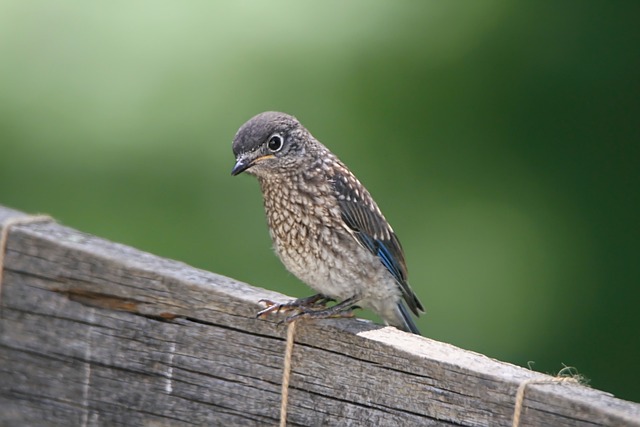
When baby birds, or nestlings, leave the nest, it is called “fledging.” After leaving, the nestlings are referred to as “fledglings” or “juveniles.”
Departure has been observed from early morning to late evening.
Shortly before departure, chicks typically beg for food from the nest-cavity entrance for ≥1 d rather than remaining in the nest proper, as they do earlier in the nestling period. The parents may become more nervous during monitoring, sometimes swooping and clacking their beaks.
Most of the time, parents feed the babies normally at the nest entrance, but sometimes the parents lure the young out with food by holding it near them and not letting them grab it; to stimulate fledging.
The entire brood usually fledges within a two hour period, but sometimes one or more babies (often runts) will remain in the nest until the next day. Usually all chicks leave on the same day, rarely ≥2 d.
If bluebird young are old enough, they may fly to a nearby perch. If they are not developed (e.g., fledging prematurely) they can end up on the ground, where they are very susceptible to predation.
The fledglings eventually move to the higher branches of nearby trees. They frequently call out to their parents. On cold or rainy days, the young huddle together.
Within 28 days, bluebird babies are able to find their own food, but may continue to beg. It is comical to watch them sitting in a pile of mealworms, begging the parents to place one in their open beaks.
Bluebirds have strong family ties. Juveniles may remain with their parents through the summer and early fall. They may assist their parents with feeding a subsequent brood.
References and More Information:
- Sialis, Autumn 1984, Bluebird Fledglings, Larry Zeleny
- Premature Fledging
- Monitoring
- Juvenile Helpers
